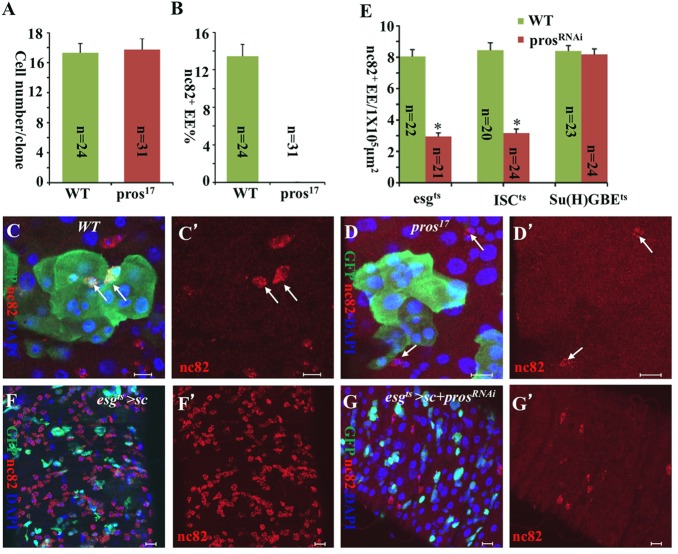Fig. 6.
Pros regulates EE cell fate determination in ISCs. (A) The quantitative cell numbers per clone in C-D′. (B) The quantitative percentages of nc82+ EEs in GFP+ clones in C-D′. Data are represented as mean±s.e.m. (C-D′) MARCM clones of wild-type control (C,C′) and pros17 (D,D′). Seven days after clone induction, GFP-marked clones of pros17 (D,D′) were completely devoid of nc82+ EEs (arrow) compared with their wild-type counterparts (C,C′), whereas the clone sizes are similar (A). (E) The numbers of nc82+ EE cells in the posterior midguts of prosRNAi driven by indicated Gal4, compared with wild-type controls. Data are represented as mean±s.e.m. *P<0.01. (F,F′) The overexpression of sc in ISCs and EBs (esgts>sc). (G,G′) The overexpression of sc and prosRNAi in ISCs and EBs (esgts>sc+prosRNAi). The overexpression of prosRNAi suppressed the excess EE phenotype associated with sc overexpression, indicating that Pros functions either downstream of or parallel to Sc. The adult fly posterior midguts were stained with anti-GFP (green), anti-nc82 (red) and DAPI (blue). Scale bars: 10 μm.

